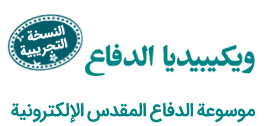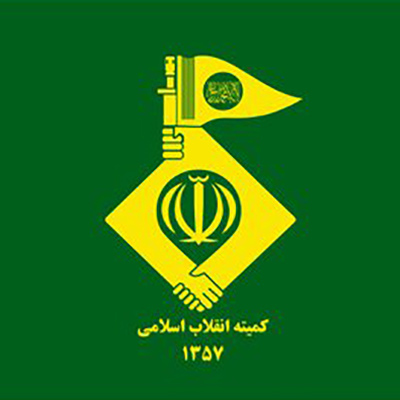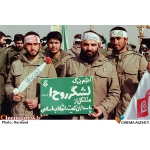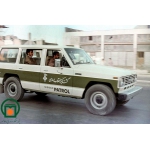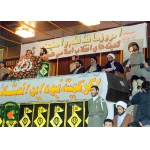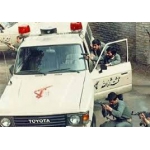Groups, Institutions, Organiza
The Islamic Revolution Committee
Written by: Mohsen Shirmuhammad,
Translated by: Hadi Qorbanyar
10 دورہ
The Islamic Revolution Committee was one of the first institutions founded immediately after the Islamic Revolution and later played an active role during the Iran–Iraq War.
Following the victory of the Revolution on February 11, 1979, local revolutionary committees—initially formed spontaneously under the supervision of clergies in mosques—were officially recognized when Imam Khomeini (ra) appointed Ayatollah Muhammad-Reza Mahdavi Kani as their head on February 12.[1] The organization was tasked with confronting social corruption, narcotics, public immorality, and anti-revolutionary activities, as well as protecting government buildings and high-ranking officials.[2]
When the Iran–Iraq War broke out, some units of the Islamic Revolution Committee joined the fighting.[3] The first major deployment from the Tehran Committee took place on October 15, 1980, when Imam Musa ibn Jafar (as) Battalion was dispatched to Khorramshahr and Abadan.[4] These forces initially fought in Khorramshahr and were later assigned a defensive line opposite Abadan’s Station No. 7. The Committee’s personnel would engage in various activities including targeting Iraqi troops with artillery, carrying out reconnaissance missions and infiltration into enemy lines, and constructing berms and bunkers. They also participated in repelling the enemy’s attack on the Zolfaqari neighborhood of Abadan (1980).[5] The Committee units later took part in Operation Thamen al-Aemmah (as) (the breaking of the Abadan siege) on September 27, 1981.[6]
Up until early 1983, the Committee’s forces engaged the enemy mainly in the western and southern Iran, often operating in non-organized formations. Finally, they formed the Imam Musa ibn Jafar (as) Battalion. Committee’s personnel served either as members of the military units or were sent to the war zones to join the Islamic Revolutionary Guard Corps (IRGC) units. By 1983, around 14,000 members of the Islamic Revolution Committees had been dispatched to the battlefronts after completing a one-month training course.[7] Due to the increasing number of volunteers from the Committees wishing to join the war and the lack of a cohesive structure to organize their deployment, the Committee’s leadership decided to form a combat brigade. Named the Imam Musa ibn Jafar (as) Brigade, this unit was officially established on May 18, 1983, based in the Lashkarak Army Base. It was organized into four battalions and dispatched to the headquarters positioned in western Iran under the command of the IRGC.[8]
In the fall of 1983, the Imam Musa ibn Jafar (as) Brigade of the Islamic Revolution Committees, together with the breakthrough battalions of the 25th Hamzeh Seyyed al-Shuhada Division, Moslim ibn Aqil, Sahib al-Zaman (as), and Muhammad Rasulullah (pbuh) participated in Operation Valfajr 4. This operation began on October 19, 1983, in the Shiler Valley north of Marivan and Panjwin. Led by the Hamzeh Seyyed al-Shuhada Headquarters, the operation sought to cut off the anti-revolutionaries’ access to Iraq, reclaim key heights, take control of Panjwin and Garmak garrisons, and push Marivan beyond the enemy’s line of sight and artillery range.[9] It resulted in the liberation of 300 square kilometers of occupied territory and the capture of 700 square kilometers of Iraqi land.[10]
In 1985, due to the growing need for manpower at the frontlines, another brigade composed of the Committee’s forces, named the Qavamine Brigade, was formed on March 1, 1986. The unit was stationed on the Majnoon Island and in Al-Faw, operating under the command of the IRGC. Organized into two battalions, it was tasked with defending an area in Al-Faw. The Qavamine Brigade later participated, under IRGC command, in operations Karbala 4 (December 24, 1986)[11] and Karbala 5 (January 9, 1987).[12]
After Operation Karbala 5, the Qavamine Brigade’s role expanded significantly, as the Committee’s forces became increasingly engaged in the war. Subsequently, on January 21, 1987, the Imam Musa ibn Jafar (as) and Qavamine brigades merged to form the Ruhullah Division.[13] During this period, the brigade stationed two battalions in defensive positions throughout the Al-Faw region, while two others secured the area across from the Iraqi petrochemical complex near Basra. From May 16, 1987 onward, the Ruhullah Division was responsible for defending Umm al-Tavil, Mahi (Fayyaz), and part of Boarin islands (all located within the Arvand River south of Shalamcheh inside Iraqi territory).[14]
In 1987, the Committee formed a volunteer unit known as the Karbala Battalion to conduct guerrilla operations inside Iraq. After undergoing specialized training, this unit was sent to the Ramazan Headquarters of the IRGC in Marivan. The unit’s mission was to identify and attack the locations where Iraqi forces and military equipment were concentrated. Operation Fath 7, which was successfully carried out, stands as one of the most notable engagements involving the Committee’s forces.[15]
The Committee’s units also participated in other major operations, including Beit al-Muqaddas 4 (March 26, 1988) in the Darbandikhan region of Iraq, Beit al-Muqaddas 6 (May 17, 1988) in Sulaymaniyah, Iraq, Beit al-Muqaddas 7 (June 13, 1988) in the Shalamcheh area, and Mersad (July 27, 1988) in western Iran.[16]
In addition to their combat roles on the frontlines, the Islamic Revolution Committee’s units, together with the Shahrbani, Gendarmerie, and Basij, took on key responsibilities in cities targeted by Iraqi forces. They included maintaining order, securing evacuation routes, protecting public and private property, guarding abandoned houses, helping the wounded, and evacuating civilians to safe places.[17]
Out of nearly 50,000 forces under the command of the Islamic Revolution Committee during the eight years of the Iran–Iraq War, 1,030 were martyred, 760 went missing, 4,469 were injured, and 143 were taken prisoner.[18]
After the war, following the approval of a law by the Islamic Consultative Assembly on June 20, 1990, calling for the formation of a unified law enforcement body, the Islamic Revolution Committee, the Gendarmerie, and the Shahrbani were merged.[19] The new organization—known as the Disciplinary Force was officially established on April 1, 1991.[20] From its establishment in 1979 until its dissolution in 1991, the command of the Islamic Revolution Committee was held successively by Ayatollah Muhammad-Reza Mahdavi Kani (1979–1982), Hojatolislam Ali Fallahian (1982–1984), Hojatolislam Ahmad Salek (1984–1986), Seyyed Seraj al-Din Mousavi (1986–1990), and Mokhtar Kalantari (1990–1991).[21]
After the merging of the law enforcement bodies, the Ruhullah Division, comprising eight combat battalions, an artillery unit, and an armored unit, was deployed to Tehran. It was reorganized within the newly established Disciplinary Force as Special Units of the Revolutionary Guards. During the years 1991–1992, the three regimental units of the division conducted several combat operations across eastern Iran, which were followed by a series of subsequent missions. In later years, in line with the new structure and missions of the Disciplinary Force, the remaining members of this division were reorganized into the Special Unit, tasked with maintaining internal security and public order.[22]
[1] Hashemi, Seyyed Ali va Mahdi Ranjbar, Azarbaijan, Tarikh-e Shafahi-ye Komiteha-ye Enqelab-e Eslami (Azerbaijan: Oral History of the Islamic Revolution Committees), Tehran: Markaz-e Asnad-e Enqelab-e Eslami, 1387, p. 33.
[2] Ranjbar, Seyfollah, Niruhaye Entezami va Jang (Law Enforcement Forces and War), Tehran: Enteshaarat-e Eslami, 1386, Pp. 121–123.
[3] Ibid., p. 147.
[4] Ibid., Pp. 147–148.
[5] Ibid., Pp. 148–149.
[6] Ibid., Pp. 152–153.
[7] Ibid., p. 154.
[8] Ibid., p. 155.
[9] Ibid., p. 157.
[10] Jafari, Mojtaba, Atlas-e Nabardha-ye Mandegar (Atlas of Lasting Battles), Tehran: Sooreh-ye Sabz, 35th Ed., 9389, p. 94.
[11] Ranjbar, Seyfollah, Ibid., p. 160.
[12] Ibid., p. 162.
[13] Ibid., Pp. 163–164.
[14] Ibid., p. 164.
[15] Ibid., p. 157.
[16] Ibid., Pp. 167, 168, and 171.
[17] Ibid., Pp. 149–150.
[18] Ibid., p. 175.
[19] Hashemi, Seyyed Ali va Mahdi Ranjbar, Ibid., Pp. 185–186.
[20] Ranjbar, Seyfollah, Ibid., p. 14.
[21] Hashemi, Seyyed Ali va Mahdi Ranjbar, Ibid., Pp. 109–110.
[22] Ranjbar, Seyfollah, Ibid., p. 169.
